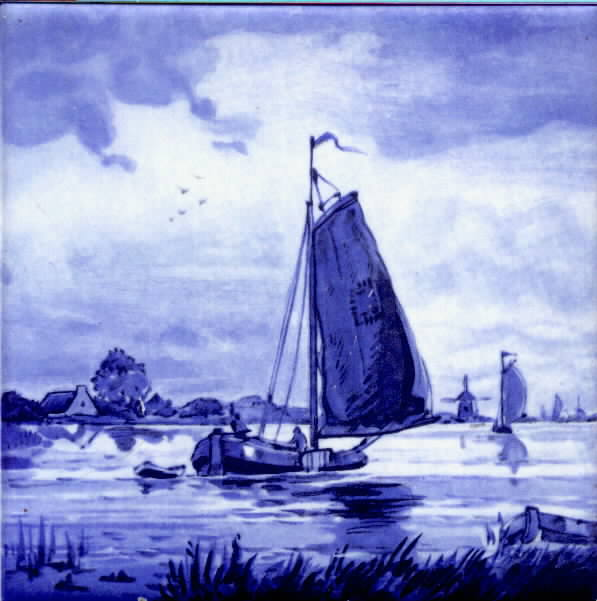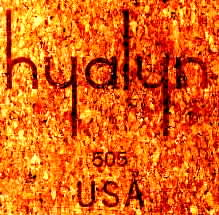|
©1999-2015 |
hyalyn porcelain company Presented by Christine & Jamie Boone
Leslie Moody was a native of Zanesville, Ohio. During his high school and college years, he found summer employment at many of the potteries in that area. He majored in architecture for 2 years at Ohio State University, then, in 1931, he helped set up the equipment for the newly-established Department of Ceramic Art. He studied under Arthur E. Baggs, who was hired away from Cowan Pottery to develop a course at OSU in all phases of art pottery production. He researched glazes as part of his degree, and kept all of his notes on his studies on glazes. He received a Bachelor of Fine Art in Ceramic Arts from Ohio State University in Columbus, Ohio. Frances also attended Ohio State and graduated with a Bachelor’s Degree in English and then, in 1929, a Masters Degree in Sculpture. After college, in their early 20’s, they moved to Dallas, TX. Leslie began working at Love Field Pottery - a small pottery that produced large gray crocks and jars used in grocery stores. But this was during the depression, business was slow, and Leslie soon had no job. He told his boss he would like to try selling the crocks, so Leslie and Frances spent the next year traveling all over Texas, staying in “tourist courts”, and selling the crocks - mostly to people who were making “home-brew”. After a year, they returned to Columbus, and Leslie got a job at Ohio State in the Ceramic Art Department, and Frances began teaching classes in sculpture to children. Early in 1934, Vernon Stockdale of Abingdon Pottery came to OSU looking for someone to manage a new artware division. They set off for Abingdon IL - where sanitary ware was currently produced - for Leslie’s interview. Raymond Bidwell was also interested in the development of the artistic side of the artware division, and interviewed Frances the same day. Leslie was hired as one of the managers of the Abingdon Artware Division that held its Grand Opening in August 1934. The main designer was Eric Hertslet, and Frances was, as she says, “sort of a non-commissioned participant” whenever they wanted something modeled. Eric Hertslet died in the early months of production, and Frances Moody became the designer of many of the most prized pieces of Abingdon artware. She was an accomplished sculptress, or modeler, and sculpted many of the pieces in plaster to create a model from which the production molds were made. She designed all six of the 1934-38 Abingdon sculptured female figures. Many of her designs were based on projects she had done at OSU - the Kneeling Nude, a “mystery lady” she had called “Night”, and the chess set. Besides several of the cookie jars, her designs also included the Horsehead and Seagull bookends, the Daisy line, the Peacock, the Pouter Pigeon, and the donkey and elephant lines made for the 1940 election year. Leslie was interested in the design of the pieces, and did design the Abingdon Fern Leaf pattern – a very popular line to collectors today. He was even more interested in the glazes. The Moodys spent 8 years at Abingdon. In 1941, business was booming, and they thought it was a good time for them to pursue the dream of owning their own pottery. Similarity with Abingdon pieces:
While the Abingdon artware division was closed in 1950 and many of their molds were sold to other potteries, we have found no record that hyalyn bought any of their molds. The Moodys went to Hickory NC with dreams of setting up a large pottery with a large production capacity. However, due to the war, government regulations did not allow startup of any new manufacturing processes that would use fuel oil. Instead, they worked in the local schools until Leslie was offered a management job at San Jose Pottery in San Antonio, Texas. They remained there until the end of the war and then, in 1946, returned to NC to set up their pottery. With his knowledge of architecture, Leslie designed the building to house the pottery, while they both tried to decide what to call their dream. Looking through art and pottery books, they finally stumbled on a word in the dictionary – h-y-a-l-i-n-e - “a translucent glass-like substance”. They felt this described their future pottery and its glazes. They did, however, change the spelling slightly - to “h-y-a-l-y-n” - and named their venture “hyalyn porcelain company”. Porcelain is defined as “ a clear, translucent ware with a body that is nonporous, nonabsorbent, or vitrified”. According to this definition, hyalyn may not truly be porcelain. They may have used “porcelain” to refer more to its fine quality as opposed to heavier earthernware pottery. Both Abingdon and hyalyn are described as vitreous, non-porous and non-absorbent ware containing silica fired at a higher temperature than earthernware. hyalyn was fired at an even higher temperature than Abingdon – at 2,700 degrees. This was probably done in a tunnel kiln in which ware is fired by being carried through on flat cars, or in later years, a conveyor that moves very slowly. This resulted in an extremely hard, white body, and basically a very sturdy pottery resistant to damage or crazing. Production of pottery at the hyalyn plant began in 1946. Bud Crumbaker, who had worked in the Artware Inspection department at Abingdon for Leslie Moody, joined them in Hickory as their first employee. He lived upstairs in an apartment in their house and helped with the building of the plant. He continued there as Plant Superintendent until 1954. There were basically two operations under one roof: art pottery and lamp bases. Since both Leslie and Frances had studied ceramics professionally, the body and glazes of their pottery may have been more “professional” than some potteries who had home-grown artists. Both Leslie and Frances, through education and experience at several potteries, had this understanding. The Moodys were the main hyalyn designers, but employeed other full-time
designers including Herb Cohen, who is still active in the industry today.
As with most potteries, there were several other major ceramic artists
involved at one time or another – In the early 1960’s, Georges Briard was
commissioned to design modern shapes for a bisque porcelain line produced
in white and earthtone colors. A woman named Esta Huttner owned the
Peerless Art Company in Brooklyn and had perfected a method of applying
the raised gold decoration for Briard glassware. With her expertise,
hyalyn was able to incorporate the raised gold onto their porcelain. The
hyalyn designs, called “Midas” epitomized Briard’s sophisticated yet whimsical
abstractions. These pieces are probably the most popular hyalyn collector
pieces today, although it is rumored that the Briard pieces were actually
designed by a black artist.
How was hyalyn marketed and where was it sold? We really have no information on the distribution of their wares, but will speculate. Since they had been with 3 other potteries before starting hyalyn, they probably knew the ins and outs of the various gift and artware shows, the department stores, and the florist trade. While the higher-end items were probably handled by department stores, the lower-priced vases and pots were probably sold directly to the florists. And someone had to carry all of those ashtrays! While there is certainly more hyalyn to be found in the southeast, we have picked it up all over the country, so we believe that they had a nationwide distribution network.
1. Styles and shapes ran the gamut – classical, oriental,
Scandanavian influence, and very modern. There are the usual vases,
pots, and console sets with candleholders, as well as cookie jars, chess
sets, figurines, some animals, bookends, wall pockets, and lots of ashtrays
–with a wide range of sizes in each.
The hyalyn pottery was owned and managed by the Moodys from 1946 until 1973. Leslie passed away that year, and the building was sold. It housed several pottery companies, including Vanguard and possibly California Art Studio since that time, with pottery production continuing there until 1997. A lampshade company called Hyalyn is still in business in Greensboro today and may have produced the shades for the hyalyn lamp bases. Frances Moody is almost 94 years old and her health is still quite good.** Sample pieces and prices: We have paid $0.50
to $40, mostly in the $5 range. The difference between an “accumulator”
and a “collector” is that the collector has knowledge about what they have.
I believe that hyalyn is quietly being accumulated by “pottery people”
just because of its beauty, and when more information is available, it
will become even more popular.
** In February 2000, Lynn Moody Igoe, Les & Fran Moody's daughter, contacted the association and reported that "my mother will be 95 in April and is no longer in great health though I think her doctor says she is in good health for her age." *** Frances Moody passed away on June 16th, 2000. WPA Related Pages:
|










 Identifying
hyalyn:
Identifying
hyalyn: